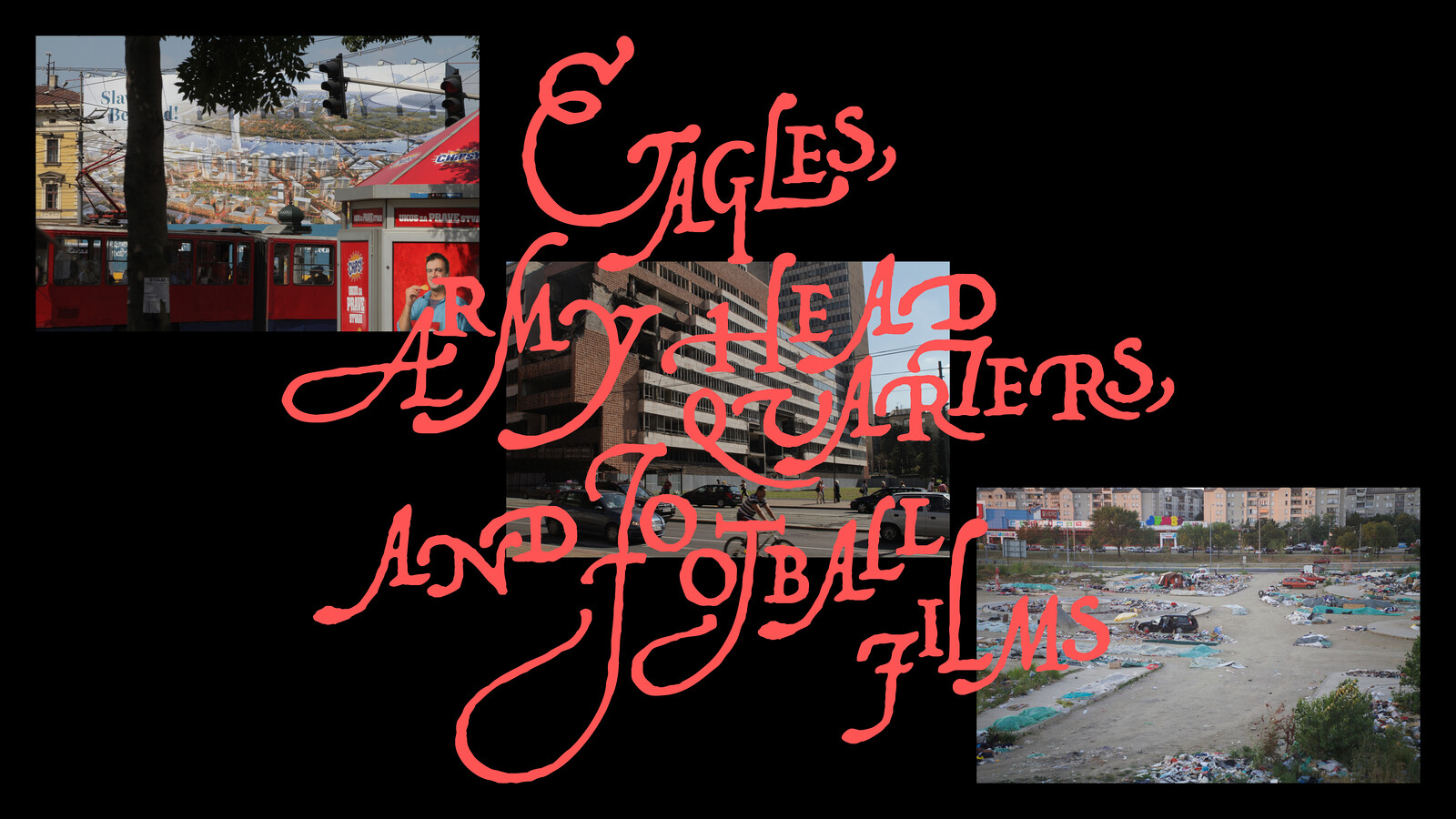Eagles, Army Headquarters, and Football Films
February 15–April 12, 2025
20 Wausan-ro 29 Na-gil
04053 Seoul
South Korea
Hours: Monday–Sunday 10am–7pm
T 82 2 3141 1377
gallery.loop.seoul@gmail.com
Born in Belgrade, Bojan Fajfrić has spent the past decade documenting three key locations in his hometown through photography: the buildings of Army Headquarters, heavily damaged in the 1999 NATO bombing; the Belgrade Waterfront, a controversial development project reshaping the city’s fabric; and the remnants of a movie set that reconstructed 1930s Belgrade. This exhibition presents a three-channel video installation that traces the transformations of these sites, drawing from an archive of more than 6,000 photographs.
The Army Headquarters was built between 1954 and 1963 as a modernist architectural project designed to reflect the identity of the Yugoslav Federation through innovative architectural aesthetics. Architect Nikola Dobrović, selected through an open competition, drew inspiration from Henri Bergson’s philosophy, proposing ‘Bergson’s diagrams.’ Dobrović translated Bergson’s ideas into dynamic architectural forms, using the void as a key element of a new national identity—one shaped not by solid monuments of power, common in Soviet architecture, but by absence, movement, and the individual’s experience of space.
As the Kosovo conflict escalated in 1999, NATO, under the leadership of the United States during President Clinton’s administration, launched an aerial bombing campaign against Yugoslavia, justifying the action as a humanitarian intervention. The damaged Army Headquarters were abandoned for years, serving as a lasting reminder of NATO’s intervention and its unresolved legacy in the city’s landscape.
In recent years, the Serbian government has moved toward privatizing the site. In 2024, a private equity firm founded by Jared Kushner, Donald Trump’s son-in-law, secured a 99-year lease on the Army Headquarters for redevelopment. Richard Grenell, former US ambassador to Germany and special envoy to the Balkans during the first Trump administration, facilitated the deal. A massive banner currently covers part of the site, featuring the image of a young female lieutenant as a recruitment ad for the Serbian military.
In 2014, the Serbian government and Eagle Hills, a private company based in Abu Dhabi, launched the Belgrade Waterfront real estate development project. The project involves reconstructing the Sava Riverbank area, constructing the Balkans’ largest shopping mall, as well as building condominiums, hotels, offices, and retail spaces. The project has been linked to corruption scandals, including illegal property destruction, land appropriation, and obtaining illicit building permits. The demolition of cultural legacy and the rapid privatization of public space reflect broader European trends where nationalist politics and neoliberal urbanism converge. Fajfrić contextualizes these changes within a larger movement of historical revisionism, in which the legacy of antifascist resistance is increasingly erased in favor of political ideology and commercial interests.
On the opposite bank of the Sava River, amidst New Belgrade—the largest urban development project after the Second World War, with initial plans drawn by architect Dobrović—lie the remnants of a film set. This set was constructed for Montevideo: Taste of a Dream, a Serbian historical drama that nostalgically portrays the Yugoslav national football team’s journey to the 1930 World Cup in Uruguay. Built as a detailed reconstruction of Belgrade’s Terazije Square in the 1930s, the set was meant to become a theme park, but the business failed and all but the central fountain was demolished. Fajfrić documents the site’s transition through various temporary uses, including an illegal Roma settlement, a flea market, construction site and a landfill.
The exhibition serves as the artist’s response to urban identity shifts driven by foreign speculative capital, the deliberate erasure and destruction of historical legacy, and political attempts to manipulate collective memory. It displays what disappears in the face of forced oblivion and brings together the suppressed and marginalized to create a new sociological map of the city.
Written by Ji Yoon Yang, Director of Alternative Space LOOP / Translated by Jee Won Kim.

